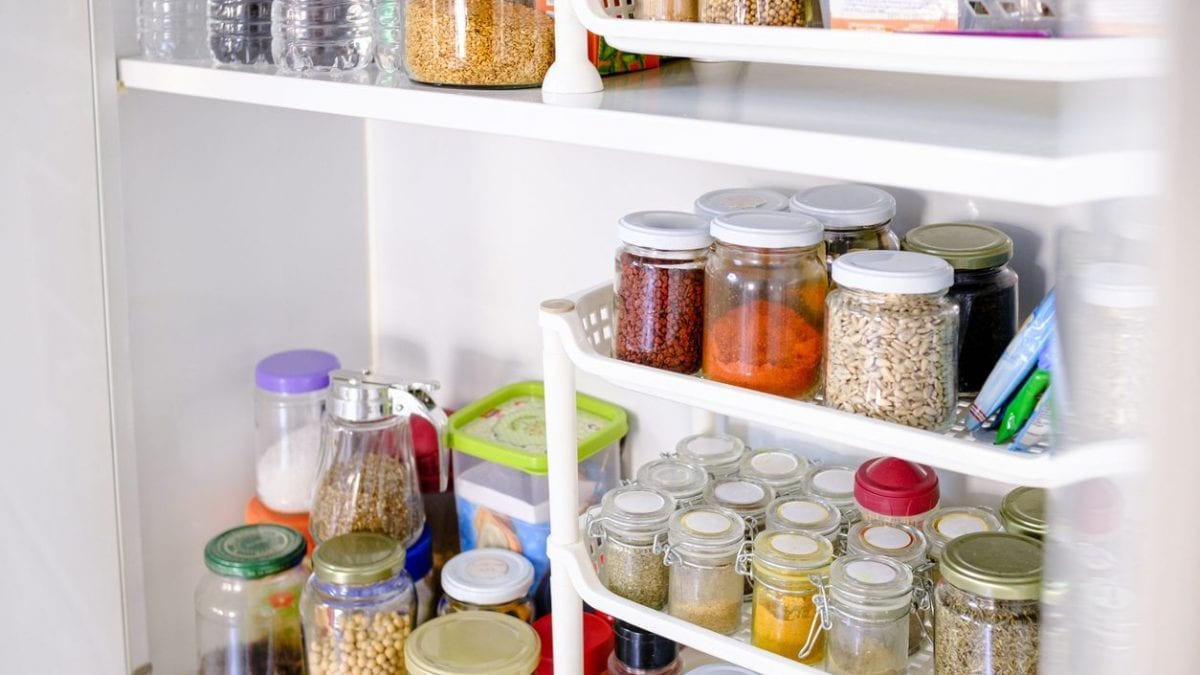
Having a dedicated pantry area in your home is incredibly useful, whether it's a purpose-built cupboard or a dedicated storage area for all your food supplies. Not only does it make daily kitchen tasks easier, it also creates a tidy and pleasant environment. Above all, it allows you to store food properly even over time, preserving its organoleptic properties, flavor, and texture.
To be truly useful, your pantry must be organized so that all your food is protected from the elements that could damage it, but also arranged in a way that makes it convenient for you to use. Keeping your pantry organized isn't just a matter of aesthetics, but also a way to make it functional in many ways. Not sure where to start organizing your pantry? We'll provide you with some tips and tricks for arranging food for long-lasting preservation, as well as some space-saving ideas and advice on how to keep your pantry as functional, hygienic, and tidy as possible.
Ideas and Tips for Organizing Your Pantry Properly
Foods are divided into three main categories: perishable, frozen, and shelf-stable. Perishable and frozen foods are those that require storage in the refrigerator or freezer, while shelf-stable foods are those that can be kept in the pantry. Shelf-stable foods include oil, pasta, legumes (dried or canned), flour, biscuits, wine, vinegar, shelf-stable milk, fruit juices, preserves, and "fresh" foods such as potatoes, garlic, and onions (which should be stored in the pantry rather than in the refrigerator). These products have a longer shelf life and can therefore be kept at room temperature, provided it is in a closed, dry place, away from direct light sources. Your pantry should therefore have these characteristics. With this in mind, let's analyze how to organize it in an orderly, efficient, and functional way.
1. Divide Foods By Type and By Expiration Date
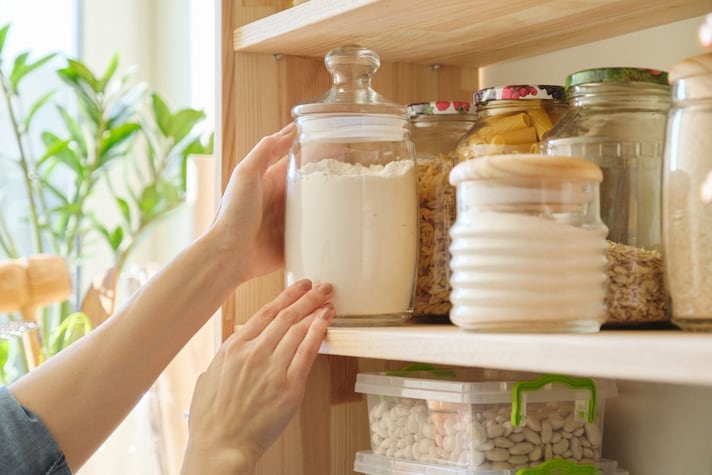
There are two fundamental rules you should follow when organizing your pantry: type and expiration date. Sorting your pantry items by type is very practical because it makes it easier to find a specific food item without turning your entire pantry upside down. You can do this by "category," such as savory foods, sweets, liquids, etc., or you can proceed by "time slot," such as breakfast, lunch, and dinner. Once you've established the categories, organize each pantry compartment by expiration date, placing items with the longest shelf life at the back and those with the closest expiration date at the front. This way, you'll be sure not to waste food and will have a clear idea of what you need to consume first.
2. Use Airtight Containers
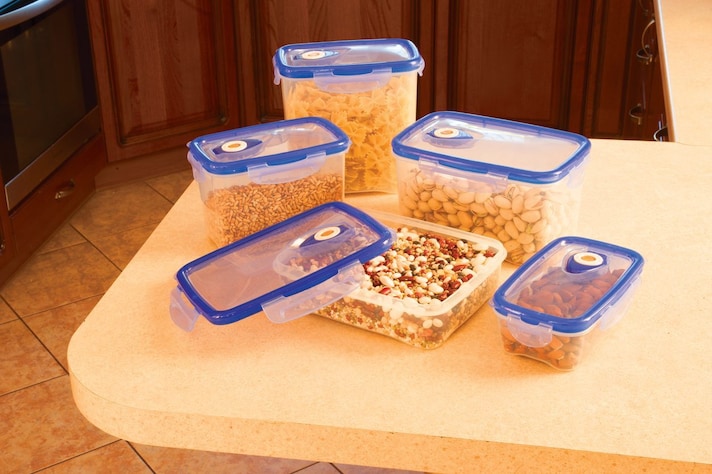
To save space and eliminate bulky packaging, but also to make your pantry more attractive, you can use a series of airtight containers to organize certain food categories. For example, glass jars are perfect for storing pasta, rice, dried fruit and legumes, and flour, while tin containers are ideal for foods like coffee, as they preserve the flavor and texture of the food longer and prevent direct contact with light. In both cases, make sure they have an airtight seal so that no external agents can penetrate the container and ruin the product. For products like potatoes, garlic, or onions, you can instead opt for wooden or wicker baskets to place on shelves to hold the paper bags in which these types of foods are stored.
3. Label All the Products You Keep Lose
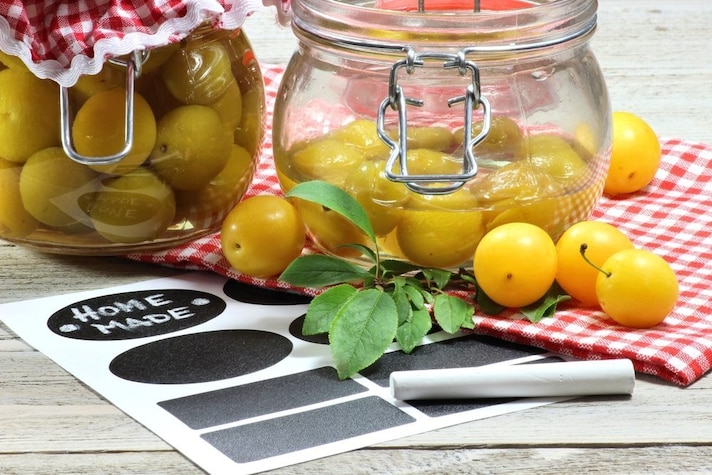
If you've decided to store your products loose, i.e., in jars as mentioned above, it's absolutely essential to label each container. This practice serves two purposes: first, it can help you recognize foods that may seem similar at first glance (think sugar and salt, or different types of spices), but above all, it helps you remember the expiration date of a particular food. You can purchase a label maker or get creative and create a homemade label; the important thing is to always include the product name and its expiration date.
4. Make the Most of All the Spaces
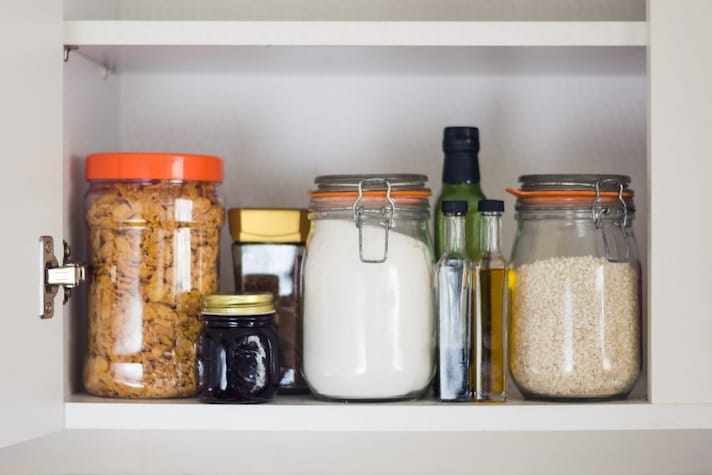
To have a beautiful and well-organized pantry, you don't need an entire room: you can achieve this even in a small cupboard if you learn to make the most of all the space you have. For example, you can stack various containers in the right combination to utilize the full height available. Or, if this solution seems too cluttered, you can add adjustable shelves that will help you create specific compartments to keep items well separated. A useful trick is to use space-saving shelves: they were designed to organize dishes on shelves, but they're also great for pantry containers. Another good idea is to use your cupboard doors for smaller items: for example, there are spice racks with containers that hang directly from the lid, an excellent space-saving solution that's also very pleasing to the eye.
5. Take Weight Into Consideration
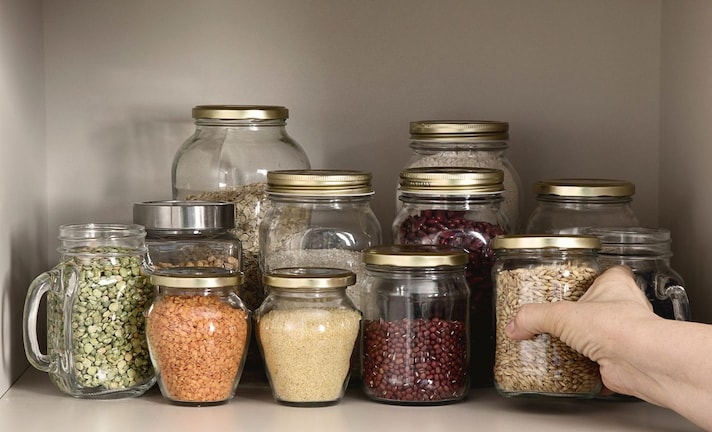
For an optimally organized pantry, it's also important to consider weight: place heavier items (such as bottles and cans) on the lower shelves of the space you're organizing, and lighter items on the higher shelves. This way, you won't risk heavier containers crushing or damaging lighter ones, and you'll also avoid placing more weight on the various shelves than they can support.
6. Perform Regular Cleaning
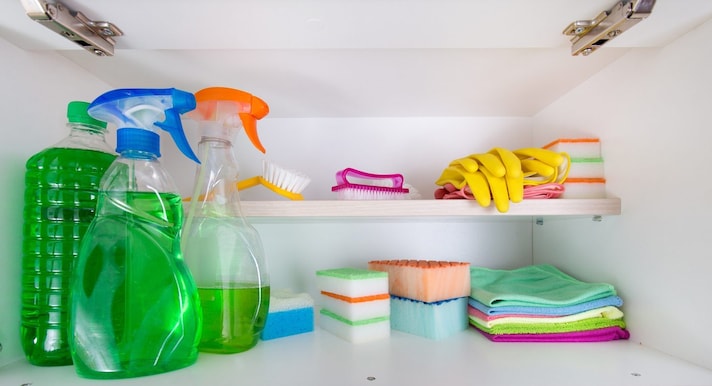
A well-organized pantry is a clean pantry, a very important aspect also for food preservation. Once a month, it's good practice to completely empty every shelf and clean it thoroughly with a damp cloth and a specific product or a natural mixture (vinegar-based ones are always optimal). Cleaning is a good opportunity to check for expired or spoiled products —for example, pasta or flour, which could develop insects and moths —and to clean the containers where the products ended up but where residue may still be present at the bottom.
;Resize,width=767;)
